What is “Excellence?”
I recently asked several professionals to answer the question: What is Excellence?
Respondents included teachers of developmentally challenged kids, heads of hospital emergency departments, and fast food restaurant executives.
Their answers were simple:
- Developing excellence in the business planning process should be the major focus and direction
- Focusing on results is biased by outlying variables
- One needs to accept small gains and details and understand the differences in individuals and structures when defining success.
These responses were typical of those I received in my survey, as exemplified by the teacher who beamed about her young challenged student learning to say a color or being able to walk up the stairs. For the emergency department manager, the example had to do with reducing average patient waiting time a few seconds. She noted that those few seconds could prevent more severe complications from heart attacks and save lives. The fast food manager emphasized the importance of coordinating production of food with its prompt delivery, either “for here” or “to go”.
The purpose of this article is to make the point that these responses don’t really get to the heart of the question “What is Excellence?” Instead, they focus on specific actions and outcomes rather than on the culture and execution of excellence throughout the organization.
The following illustration will help clarify my point:
Excellence Embodied in Business Planning

Examples of companies that, by using good business management, embody excellence throughout their organizations.
Many companies say they are committed to excellent customer service. However, some companies have come to embody true excellence and not just give lip service to the term. Examples of such organizations include Lands’ End, Ritz Carlton Hotels, Nordstrom’s, and L.L.Bean. These companies have truly embraced business planning excellence at the heart of their identity, vision and mission. Excellence permeates every aspect of these organizations.
There are several common factors in these diverse companies that illustrate the components of excellence. It is sometimes overlooked in business planning that it is the culture and the commitment required throughout the companies in developing excellent practices.
Examples include:
- In order to offer unlimited returns you need to provide excellent quality
- Service companies like Nordstrom’s and Ritz Carlton both recruit and train staff to be excellent from the very first day
- Companies focused on excellence exhibit trust in their customers. The reality is that most consumers are honest. If companies are preoccupied with the few cheaters they will often ignore many legitimate complaints and not improve as a result
- Empowering employees both encourages satisfied customers and motivates employees to experience success.
Another component of excellence is identifying, nurturing, and realizing the potential of excellent people. While it is easy to extol the virtues of excellence, we frequently ignore the conditions and risk of not pursuing it.
- Excellence requires integration with organizational cultures, structure, and collaboration
- Excellent people often tend to be independent by nature and require a culture that encourages their energy, determination, and focus
- Evaluating the potential of excellent people becomes complex. They are frequently introducing new concepts, processes, and technologies. Evaluating both the risks and costs of success is frequently done in unchartered waters.
A major negative consequence of “results-focused” excellence is that we can make more errors in constraining excellent people than we do by encouraging them. The reason for this is quite simple. Everyone is aware of the costs and failures of special programs that do not succeed. What we are not aware of are the losses we never realized in not pursuing new and exciting strategies.
These issues also relate to us as individuals. We all want to be effective at whatever we are doing. No one starts their days saying “I am going to do a lousy job today,” or “I am going to make my day miserable.” However, many times our aspirations, goals, and efforts become frustrated. There are numerous dimensions to this dilemma that can all contribute to our ineffectiveness. Avoiding failure and stifling excellence has now become epidemic to many organizations. The organization builds layers to take every idea and ensure it is analyzed and reviewed to meet various legal, cultural, and strategic criteria. This almost always results in delays, watering down, and eventual rejection of the exceptional and different.
A friend of mine once put it this way when talking about many students coming out of ivy league business schools: “They are not trained how to succeed, but how NOT to fail.”
Some suggestions for creating an environment and approach that foster Excellence include:
- Recognize strengths and weaknesses—then pursue the strengths. For example, in interviewing applicants I will focus on the strengths rather than the weaknesses to learn about the successes to understand the energy and dedication of an applicant
- Find opportunities where one can succeed. People are frequently terrified to quit many dead end jobs or admit they are wasting their careers. This is particularly true in declining companies and industries
- Provide the confidence to pursue what one should be doing. Many times both individuals and organizations minimize risk even if the payoffs more than justify the risk
- Stop spending so much time trying to correct weaknesses. Start exploiting advantages that can result in significant opportunities. Organizations continue to feed lost causes and ignore realities like changing demographics, technology, and competitive position
- Organizations need to commit to professional decision making as opposed to position. Companies need to start accepting expertise through giving more responsibility to their key employees and having flatter organizations. These organizations are also frequently more nimble and have lower costs
- Within organizations, different cultures need to accepted and appreciated. For example, the accounting and product development teams have different roles and require different structures and rules to be optimally efficient
- If an organization is not making mistakes, they aren’t trying hard enough. This is the best phrase I have heard in terms of learning to accept risk. The key issue is not to encourage failure. The successes will justify the total effort.
It is clear that both individuals and organizations have over-emphasized the risk of failure versus the rewards of success. One need only look at the old line industries, such as retail and furniture, to realize that many of them have simply not adapted to their changing environments and taken the necessary risks to survive. Similarly, individuals underestimate the risk of staying in poor situations and the rewards of trying to maximize their capabilities. Both individuals and organizations need to realistically assess the risks of failures and the rewards of success.
As Gandhi said:
Many people, especially ignorant people, want to punish you for speaking the truth, for being correct, for being you.
Never apologize for being correct, or for being years ahead of your time.
If you’re right and know it, speak your mind. Speak your mind.
Even if you are a minority of one, the truth is still the truth.

 Internet Marketing
Internet Marketing
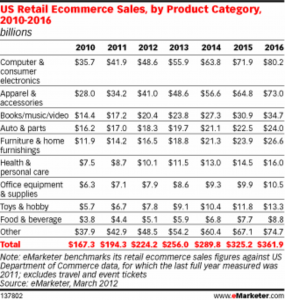
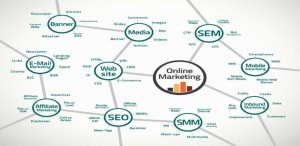

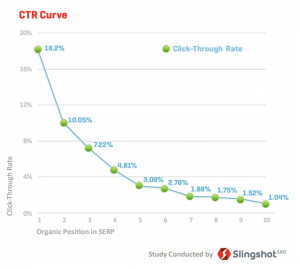

 Blogs
Blogs I hope that what I have shared with you makes a convincing case that the importance of successful online marketing of your product or service cannot be underestimated. None of the elements of internet marketing work in a vacuum, and you should consider your goals, your budget and what overall strategy and plan-of-action would be best, especially given the stage of development of your business. At the end of the day, online marketing boils down to testing and measuring what you’re doing, tracking the results of campaigns and tweaking the programs. That’s why analytics is so important – with good analytics you can gauge what is going on with your online marketing and adapt accordingly, insuring that you are not wasting time and money, but rather that you are achieving tangible results while knowing why.
I hope that what I have shared with you makes a convincing case that the importance of successful online marketing of your product or service cannot be underestimated. None of the elements of internet marketing work in a vacuum, and you should consider your goals, your budget and what overall strategy and plan-of-action would be best, especially given the stage of development of your business. At the end of the day, online marketing boils down to testing and measuring what you’re doing, tracking the results of campaigns and tweaking the programs. That’s why analytics is so important – with good analytics you can gauge what is going on with your online marketing and adapt accordingly, insuring that you are not wasting time and money, but rather that you are achieving tangible results while knowing why. Guidelines for Website Design
Guidelines for Website Design Startup Business Internet Guide
Startup Business Internet Guide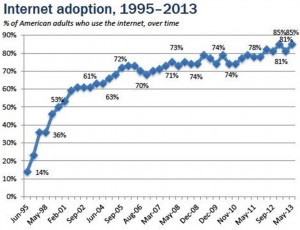
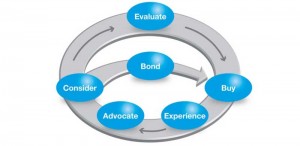 Here are some of the major issues you need to think about as your online marketing and sales outreach meets your potential customers in the purchase process:
Here are some of the major issues you need to think about as your online marketing and sales outreach meets your potential customers in the purchase process:

 Rethinking Pricing
Rethinking Pricing So much for the simple “Good Ol’ Days…”
So much for the simple “Good Ol’ Days…”
